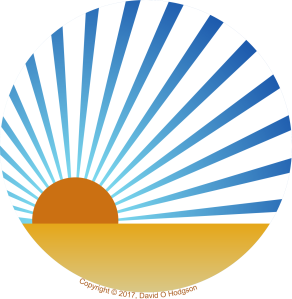
Life Drawing Sketch, St Martins School of Art, 1982
The illustration above shows one of my very earliest “from life” pencil sketches. It was done during an Illustration class at St. Martins School of Art, London, during 1982. Strangely, prior to that, I had never participated in a formal “life drawing” art class anywhere.
My tutor at that class was an artist called Ian Ribbons. I’m ashamed to say that I knew nothing about Mr. Ribbons at the time, and it was only many years later that I discovered that he was in fact a successful and famous illustrator in his own right.
Developing a Technique
In earlier posts, I’ve exhibited a few later examples of my figure drawings from live models. Those examples were drawn when I’d already gained some experience of life drawing, and some confidence with my preferred technique. However, that knowledge was hard-won, and, as I’ve previously indicated, I seriously lacked confidence in my figure drawing skills until I reached my early twenties.
My lack of competence wasn’t entirely due to my own shortcomings. The inadequacy of what was offered to me as “Art education” at school did nothing to reinforce my confidence or help me to improve. We were not given any classes in drawing the human figure, ever, even as part of the so-called “Advanced Level” course, which seems appalling in retrospect. Occasionally we were given a homework assignment to “do a self-portrait” or “draw some people”, but with no accompanying guidance or help, so inevitably the results were disappointing and demotivating.
(I’m aware that I wasn’t the only one to suffer from this “teachers shouldn’t try to teach” approach to education. There seemed to be a weird but common attitude that trying to inculcate drawing or aesthetic expertise was somehow tyrannizing innocent students, who should instead be left to wallow in ignorance. The result was that we now encounter many “artists” who seem unable to summon much actual artistic skill, which must surely be frustrating for those who are aware of it.)
It was only when I got to Imperial College, and volunteered to be the Publicity Officer of the H G Wells Society, that it dawned on me that I might have “bitten off more than I could chew”. I realized that I was probably going to have to draw people, for public display, and make it look good! It somehow occurred to me that some professional instruction might help, so I sought out the course at St Martins.
Ian Ribbons
As I mentioned above, my tutor at St. Martins was Ian Ribbons. Years after taking the Illustration class there, I stumbled across a copy of a 1963 book called Illustrators at Work, at a secondhand book shop. The book’s dustcover is shown below.

Illustrators at Work, 1963
As the cover shows, the book was compiled by the famous British illustrator Robin Jacques (who was the brother of the actress Hattie Jacques), but it includes biographies and samples of the work of many other British artists. There, on page 45, was a section about Ian Ribbons, complete with the following biography:

Ian Ribbons Biography from “Illustrators at Work”
Incidentally, the same book also includes a section on Ronald Searle, another well-known British artist, who happened to be a bunkmate of my mother’s first husband in the Japanese POW camp at Changi, Singapore, during World War II. I’ll have more to say about him in a future post! [9/25/20: Now posted. See The POW Artists of Changi]
Benefits of the St Martins Class
There’s no doubt that Ian Ribbons’ guidance was excellent, and it helped me gain some vital artistic confidence, in a way that I had not remotely anticipated. Without that inspiration, I probably would not have produced much of the publicized artwork that I subsequently created while I was a student in London.
For the first time ever, I felt that I had the ability to produce work that could credibly be displayed in a public setting without inducing (unintended) laughter. In retrospect, not all of what I produced in those days was good, but at least I wasn’t paralyzed by perfectionist concerns.
I must add that another major benefit of the Illustration class at St. Martins was simply the opportunity to work alongside other not-so-famous, but very competent, professional artists. There wasn’t really any program of formal instruction, but each of us was working on our own drawings and developing our own techniques.
If I saw another artist using a technique that interested me, I could simply lean across and ask, “How did you do that?”
That was, in fact, how I learned the ballpoint pen technique that I used for the portrait of Pallab Ghosh. Another artist at the class had already used that technique (for a portrait of actor Roger Moore, as I recall), so I simply asked him about it, then tried it myself. I doubt that I would ever have thought of such a technique without his example to look at!

Pallab Ghosh as “Super-Ed” (Superman)
I don’t think that I have ever before or since found myself working among such a concentrated group of talented artists. Presumably that was due to the location: we were in Central London.
Jeopardizing My Degree?
When my tutor at Imperial College learned that I was taking a part-time class at St. Martins, he expressed concern that it could detract from my engineering studies, and possibly even jeopardize my prospects of obtaining a degree! (I was working at Selfridges on Saturdays too, which was also deemed inadvisable.) Fortunately, all those concerns turned out to be nonsense, and I’m really glad now that I took that opportunity to “broaden my horizons”.
